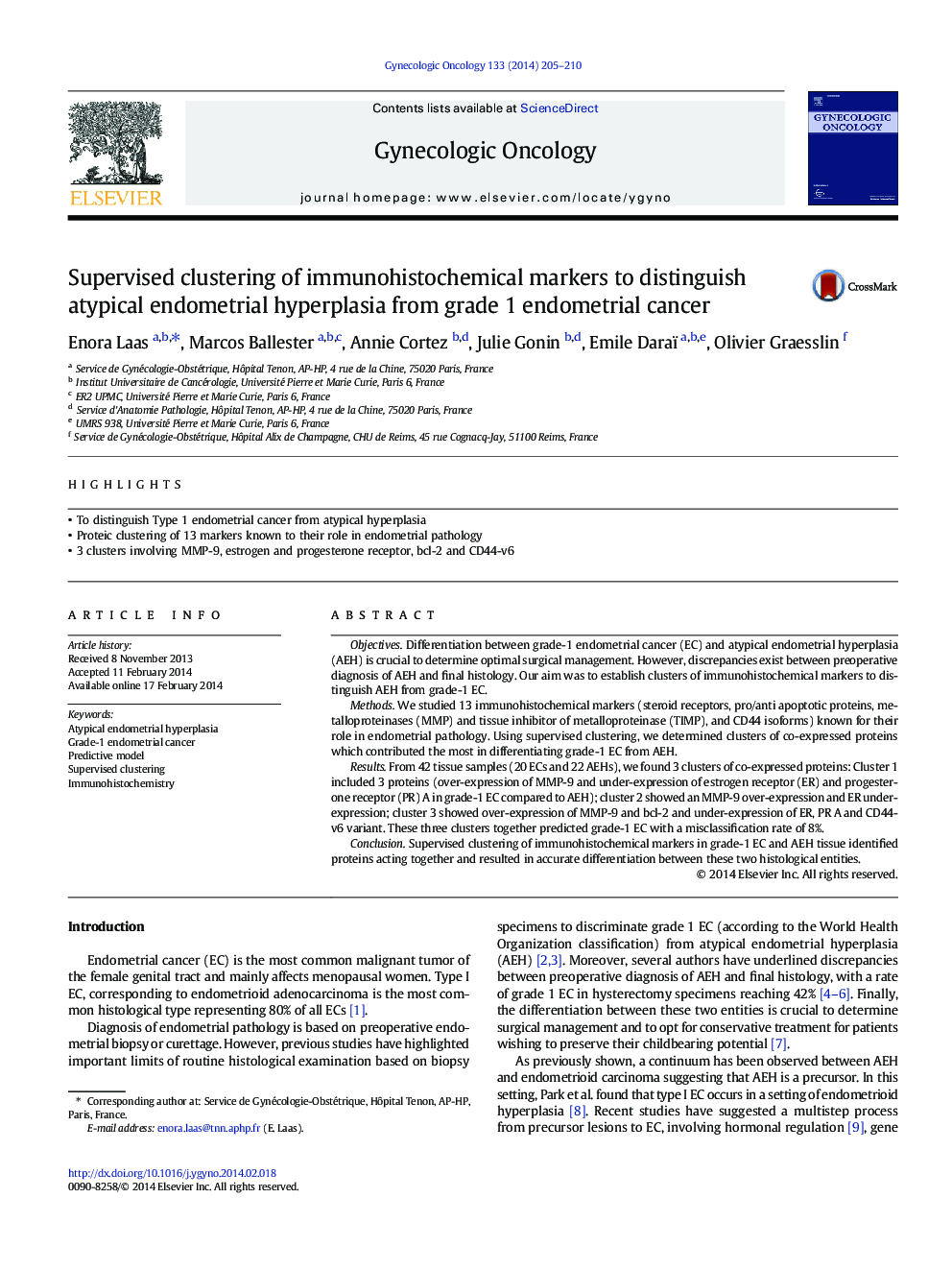| Article ID | Journal | Published Year | Pages | File Type |
|---|---|---|---|---|
| 6182708 | Gynecologic Oncology | 2014 | 6 Pages |
â¢To distinguish Type 1 endometrial cancer from atypical hyperplasiaâ¢Proteic clustering of 13 markers known to their role in endometrial pathologyâ¢3 clusters involving MMP-9, estrogen and progesterone receptor, bcl-2 and CD44-v6
ObjectivesDifferentiation between grade-1 endometrial cancer (EC) and atypical endometrial hyperplasia (AEH) is crucial to determine optimal surgical management. However, discrepancies exist between preoperative diagnosis of AEH and final histology. Our aim was to establish clusters of immunohistochemical markers to distinguish AEH from grade-1 EC.MethodsWe studied 13 immunohistochemical markers (steroid receptors, pro/anti apoptotic proteins, metalloproteinases (MMP) and tissue inhibitor of metalloproteinase (TIMP), and CD44 isoforms) known for their role in endometrial pathology. Using supervised clustering, we determined clusters of co-expressed proteins which contributed the most in differentiating grade-1 EC from AEH.ResultsFrom 42 tissue samples (20 ECs and 22 AEHs), we found 3 clusters of co-expressed proteins: Cluster 1 included 3 proteins (over-expression of MMP-9 and under-expression of estrogen receptor (ER) and progesterone receptor (PR) A in grade-1 EC compared to AEH); cluster 2 showed an MMP-9 over-expression and ER under-expression; cluster 3 showed over-expression of MMP-9 and bcl-2 and under-expression of ER, PR A and CD44-v6 variant. These three clusters together predicted grade-1 EC with a misclassification rate of 8%.ConclusionSupervised clustering of immunohistochemical markers in grade-1 EC and AEH tissue identified proteins acting together and resulted in accurate differentiation between these two histological entities.
